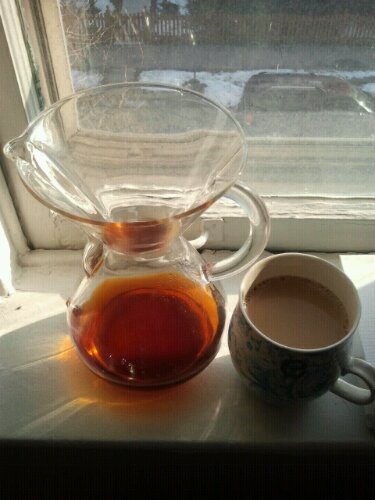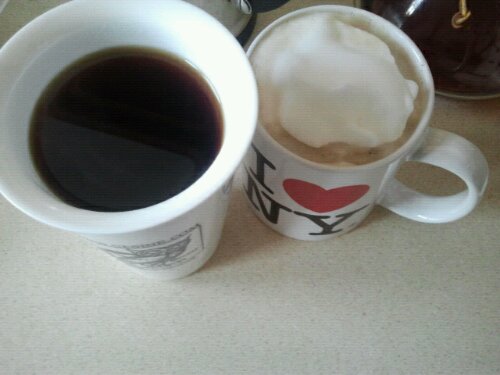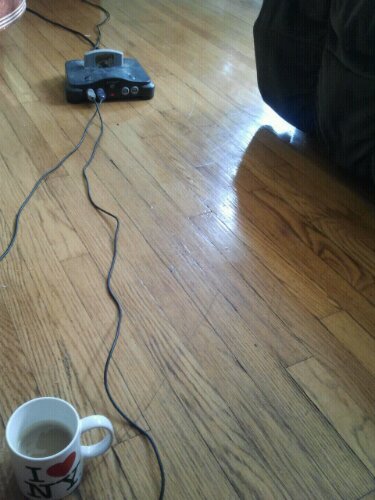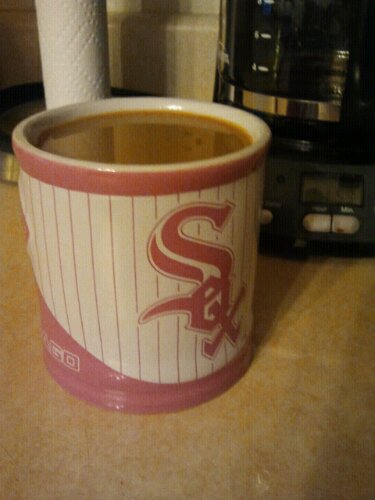
An Ethiopian single-origin from Intelligentsia

Life on the Line, the Grant Achatz memoir, is proving to be a great read.

An Ethiopian single-origin from Intelligentsia

Life on the Line, the Grant Achatz memoir, is proving to be a great read.

snapped this in the car while waiting the 10 or so minutes it took a driver to back an 18-wheeler into a teeny garage opening.

second latte of a busy day

the least bad part of waking up

big week at work. Starting it with a latte I didn't even have to order. guess I'm a regular here.



rediscover mariokart64

featuring my beloved Gesine travel mug.


brewing A Love Supreme by Dark Matter

Many coffee lovers assure me that I should be drinking my coffee black. I can certainly appreciate flavor profiles, varietal characteristics and the beauty of a single origin brew best when the coffee is black, but I prefer to sip on something with a little milk and sugar.
Generally, photos of coffee I’m drinking at home will be influenced by my beloved Nespresso milk frother. Way better than one of those battery-powered wands, but can’t be counted on to create micorfoam the same as a steam wand on an espresso machine. I’ve tried pouring the milk over coffee the way I would to make a cappuccino at work, and it’s just not made for that. That being said, the thing is awesome, works super well, is easy to clean, and is the closest I think I can get to a steam wand.

01. There are two attachments that come with the milk frother. The first, shown above, looks like a whisk, and creates foam like you’d have on a cappuccino. The second, not shown, creates hot steamed milk with just a little foam, similar to what you’d want for a latte. I’ve also used the second attachment to heat milk for hot chocolate.
02. Lines inside the canister indicate the maximum amount of milk that should be used for the given attachments. The whisk attachment requires very little milk, and stretches it to fill the canister almost entirely.
03. This is meant to show the whirlpool formed when the machine is turned on, but the magic moment was pretty difficult to capture. The machine runs for less than a minute.
04. Et Voila! Snowy white milk foam.

I add a little vanilla sugar to my coffee before topping it with foam. Heating the milk this way draws out a lot of milk's natual sugars, so I use much less than I would if I was adding cold milk.
Of all the ways to brew coffee (that I am aware of/have tried), my favorite is with a Chemex. The only way to improve a simple cup of coffee would be to brew an americano using a manual espresso machine. Even then, it wouldn’t be as pure and simple. Also, a lot more can go wrong when brewing espresso, given the number of steps and materials necessary. I’m very happy with a Chemex, a filter, some coffee and some hot water.
I think it’s absolutely essential to weigh your coffee when brewing, rather than measure by volume (with a tablespoon). Different beans have different densities, and you can’t count on Metropolis Falstaff to brew perfectly at 5 tablespoons per 25oz water just because El Diablo from Intelligentsia seemed to.
However, the batteries just died in my scale. So until I can go get some more odd-sized giant watch batteries, that’s exactly the measurement I’m using. Forgive me.
You’ll find very helpful Chemex brewing instructions here, here, or here.
An important step when brewing freshly roasted coffee is to saturate the beans and let them bloom. The coffee will need a moment to get all bubbly and release gas. Given this time to bloom, the brewed coffee will exhibit more complex flavor.

This was intended to be an image the of coffee blooming, but it's a much better depiction of the blooming echeverria I'm growing on that windowsill.
After about a minute, you can go ahead and fill the Chemex filter with water up to almost the rim. A nice thing about brewing in a Chemex is the control you have over the time your coffee takes to extract, but it’s important to keep it under about 4 minutes. Over-extracting your coffee using any method will result in a bitter cup.

As water filters through the beans, coffee grounds are left clinging to the sides of the Chemex filter. This is a good time for a final addition of water to wash them back down into the cone.
There are lots of awesome Chemex accessories out there that help eliminate waste from disposable filters, keep the coffee hot longer, or help control the flow-rate and positioning of water. You can certainly get by without any of that, but once you’ve tasted Chemex coffee, it can be difficult to not be intrigued by what else those geniuses have come up with.